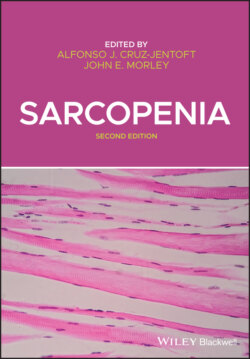Читать книгу Sarcopenia - Группа авторов - Страница 50
FUTURE DIRECTIONS
ОглавлениеThe loss of muscle mass with age is entirely explained by the atrophy and loss of individual muscle fibers [14], with further loss of function explained by altered neural mechanisms [42]. The evidence presented here clearly highlights the peripheral motor system as a key component of sarcopenia; however, the issue of MU plasticity in relation to muscle fiber loss is disproportionately underexplored in comparison with that of fiber atrophy; the former should be considered as an interventional target in future research, be that lifestyle, nutritional, or pharmaceutical. Moreover, the study of the combining factors of fiber loss and fiber atrophy would yield yet greater insight into total muscle loss, inclusive of the inter‐connectivity of the two processes, that is, is fiber atrophy a cause or a consequence of denervation and subsequent MU remodeling?
Longitudinal data are invaluable in answering these questions and have provided much with regards to the response of older muscle to a number of interventions; however, data relating to the structural and functional reorganization of older human MUs are less apparent. Critical among this are the effects of short‐term (>6 weeks) exercise interventions; while we know those who have exercised throughout adulthood have inferred some neuromuscular benefits [18, 43], it is not clear if more acute exercise (resistance or endurance) interventions can exhibit similar outcomes. Moreover, as axonal sprouting, the compensatory process of reinnervating denervated fibers, involves the synthesis and transport of a number of proteins, nutritional and pharmaceutical interventions should also be explored.
Crucially, all of the above should be approached with a multitude of in/ex vivo; techniques, combining recent electrophysiological advances such as intramuscular and high‐density electromyography (iEMG, HD‐sEMG), and molecular biology markers of denervation–reinnervation such as alterations in gene expression, production of exercise‐induced myokines, and fiber type morphology.
